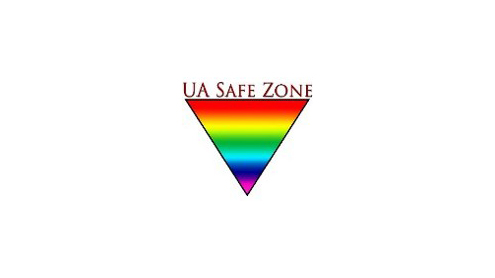 Hundreds of universities across the United States have established the Safe Zone Program, a program committed to the value of diversity.
Hundreds of universities across the United States have established the Safe Zone Program, a program committed to the value of diversity.
Renee Wells, chair of the UA Safe Zone committee, said the two main issues that Safe Zone deals with most frequently are students who are going through the process of coming out about their sexuality and students who want to report harassment.
“Fortunately, most of the harassment that Safe Zone deals with is indirect, which means that it isn’t targeted towards a particular individual,” Wells said. “It is usually an offensive comment made by a co-worker, fellow student, GTA, or professor, often involving inappropriate stereotypes or derogatory language.”
Despite the recent suicides nationwide, Wells said the program’s number of allies, those who are available to answer students’ questions and refer them to the appropriate resources, has remained constant to this point.
“We’ve only had a couple of Safe Zone trainings since the recent suicides were reported in the news,” she said.
Wells said since June 2007, the UA Safe Zone Program has trained nearly 1,100 faculty, staff and students.
Meredith Bagley, assistant professor in communication studies and ally of Safe Zone, said it’s important to think about the complicated relationship between sexuality and visibility.
“We think sometimes that we can tell who’s gay or lesbian from their appearance but in reality it’s much more complicated,” Bagley said. “One implication of this is that it’s often harder for LGBTQ students to locate a safe ally when they need support, advice, etc. The Safe Zone stickers go a long way toward resolving that.
“In terms of what it means to be an ally, one key component is visibility and another is the commitment any Safe Zone member makes to speak up on behalf of LGBTQ persons in our university community. An ally does not remain silent when homophobic comments are made or heteronormative assumptions are applied to all persons. This is not always an easy task and Safe Zone provides training and support for its members for us to do this work.”
Joel Brouwer, an associate professor in the English department and ally of Safe Zone, said he makes it clear to students that he is available to serve as a resource for anyone who has questions or concerns related to LGBTQ issues.
“I have a sign on my office door that identifies me as an ally, and I like to think that even if no one comes knocking, that sign still serves to announce my conviction that our campus should be a safe and supportive environment for all students, regardless of their gender identification or sexual orientation,” Brouwer said. Lucy Curzon, assistant professor of art history and Safe Zone ally, said being a Safe Zone ally is one of the most rewarding jobs that she has had as a faculty member on campus.
“I inform all of my students at the beginning of the year that my office is a safe space for LGBTQ students and likewise that I try to extend this safe space as far as I can outside my office and into my classroom and the wider university,” Curzon said. “I firmly believe that all universities – small or large – should set up a Safe Zone program, particularly given the high rates of LGBTQ student bullying and, unfortunately, death by suicide across the U.S.”
The Safe Zone website, bama.ua.edu/~safezone, provides a list of over 600 Safe Zone Allies across campus that can answer questions and refer students to appropriate resources.
According to Josh Burford, a Safe Zone student involvement and leadership committee member, the group hosts between 4 and 5 trainings each semester and is constantly looking for allies to help with their efforts on campus.
Wells said students who are being bullied should seek assistance immediately, either by going to the Safe Zone Office, which is located in 2014 South Lawn Office Building, by contacting a Safe Zone Ally, or by reporting the harassment to one of the Designated Harassment Resource Persons on campus.









